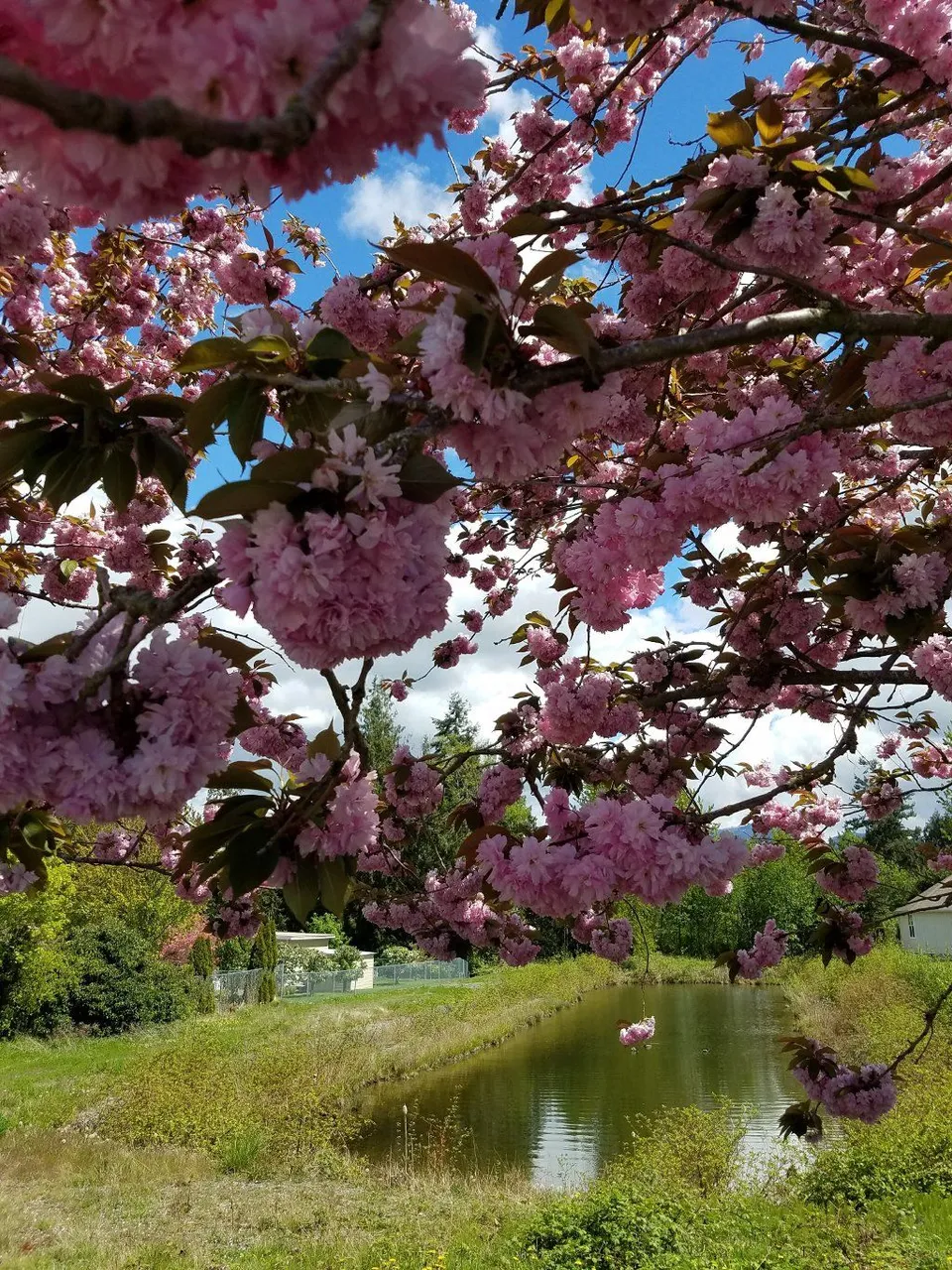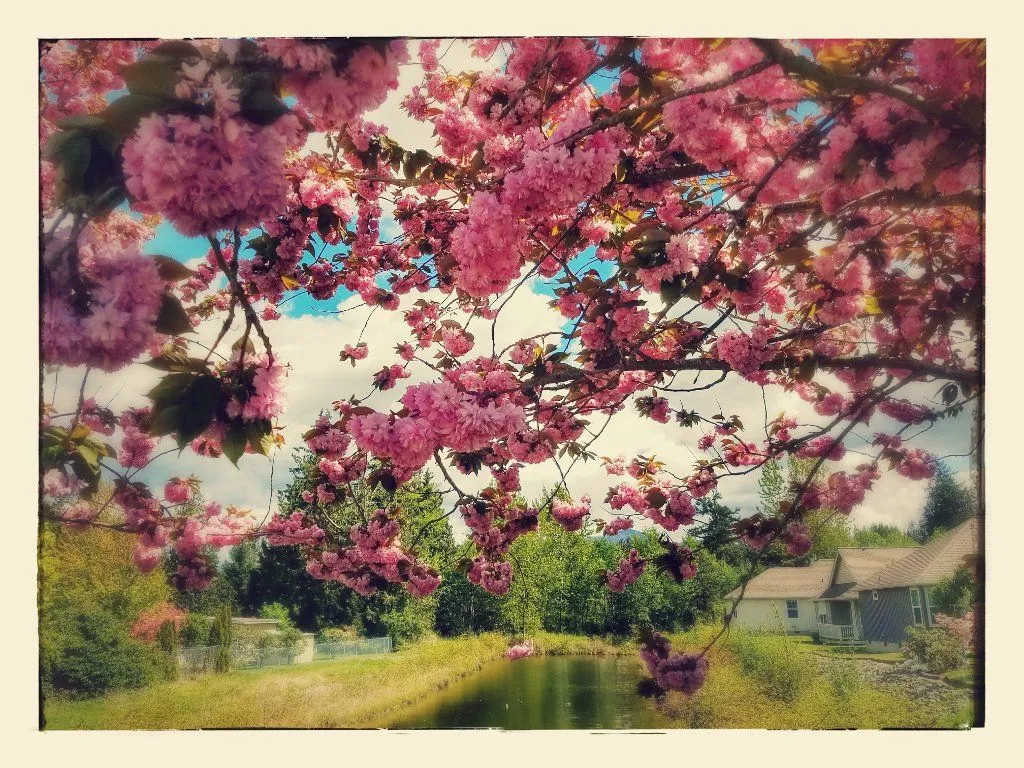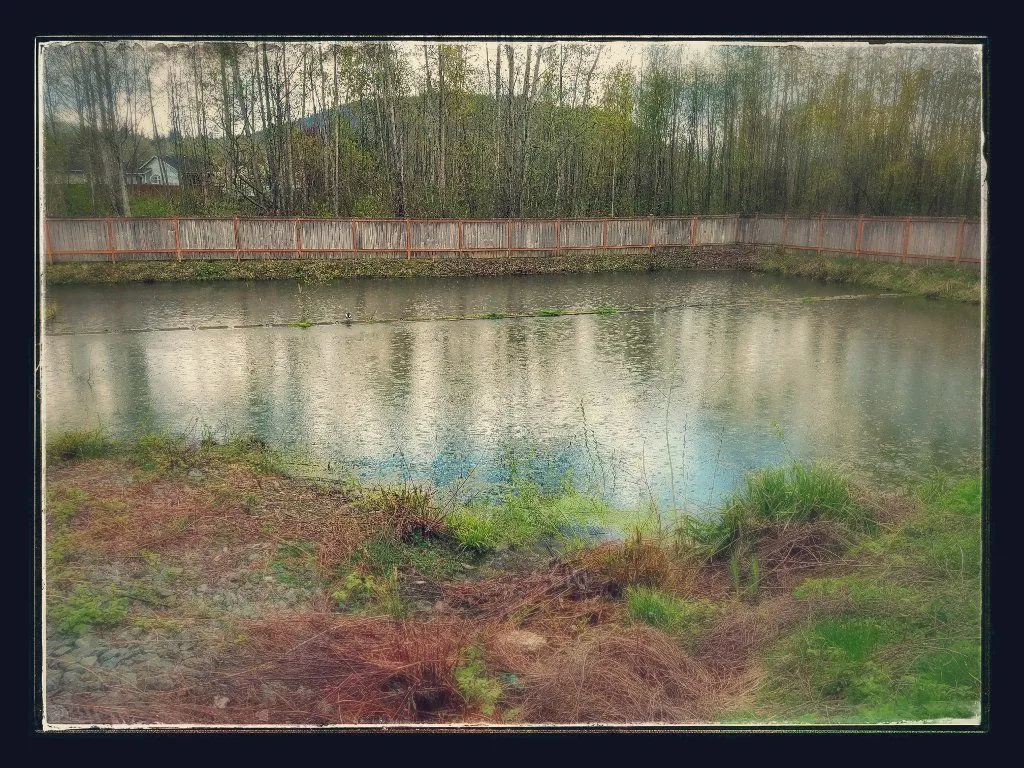One of the really interesting things I learned recently is that in spite of the fact that Germany is a leader in clean energy technologies the net effect of their efforts has not reduced their carbon footprint. In fact carbon emissions are rising despite coal use dropping.

Drain Pond with Spring Flowers
This is do in part to the fact that solar and wind energy technologies have a variable output and the coal power plants can not be taken off line easily and continue to produce output. On high solar and wind production days this excess output has to be sold on the market often traveling large distances. Any time power travels for a long distance there is a large transmission loss and more power is wasted though the resistance of the wires. This is more wasteful than using the power locally. There are other factors at play here too such as the use of diesel and increased power demand.
More on this from MIT: Germany runs up against the limits of renewables.
The solution to storing solar power has been talked about for years but nothing much is done about it because it would take some government funding or other infrastructure development. More on this soon…
Hydroelectric
Most of the power used in the Pacific Northwest is generated by large hydroelectric dams. Many of these such as the Grand Coulee Dam were constructed by government work projects to lift us out of the Great Depression.
The last of the coal-fired plants in the Pacific Northwest will shut completely by 2025.
Large scale hydroelectric dams are tough on the Salmon runs though and there are other environmental impacts. I remember a time when radical environmentalists were wanting to take all the dams down.
Storm Drains

One of the Local Drain Ponds with Spring Flowers
It rains in the Pacific Northwest a lot. There is a network of holding ponds and drain ways for handling the water runoff in every neighborhood. Water pretty much flows around here all the time. These ponds have to be keep clear of excessive plant growth to prevent the system from backing up. They are fenced off to prevent the younger children from unsupervised swimming.
It is a pretty nice system for preventing a hundred year flood from destroying peoples property and allowing the free drainage of water into the Sound.
Small Scale Hydroelectric

Local drain ponds in the rain. Notice the area around it is just perfect for solar panels
The thing about solar and wind is the difficultly to store the energy but small scale hydroelectric power generation could very easily be used in conjunction with it.
During high solar and wind energy production time the excess power could be used to pump water uphill into holding ponds in the storm drain system. This water would be allowed to drain back down when the power is needed at night or on cloudy days to run turbines to generate electric power.
No water is wasted and the existing storm drainage system could be modified to support the power generation. By producing power locally less power would be wasted through transmission loss. By having small scale projects it would be easier to add screens to prevent frogs and other fish from getting into the turbines.
Even places that don’t have a lot of rainfall could benefit from such a system because it would help control the storm surge when flooding happens. Colorado recently experienced such an event and many bridges were washed out and much damage was done.
In dry climates the water could be stored in holding tanks to prevent the loss from evaporation. The tanks and other pond structures would be perfect places to set-up solar panels or small wind mills for collecting power.
Free or low cost power produced by government work projects to do this type of thing could make it unprofitable to burn coal. Plus employing people to do this work would boost the economy not unlike Roosevelt’s New Deal - if history repeats itself. We are still enjoying bridges, trails and dams built in that era.
Thanks for reading. I hope you find this interesting. The pictures were taken by my Galaxy S7 and processed by Google Photos.